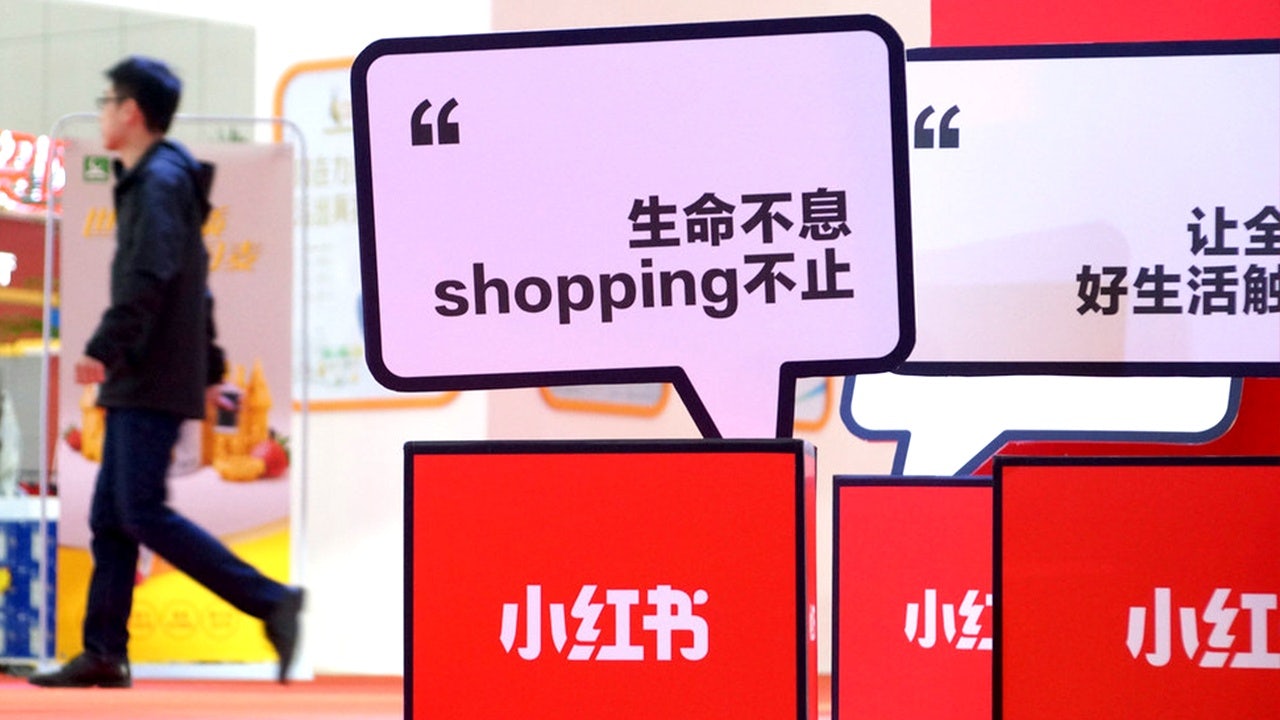Popular Chinese social media platform Xiaohongshu (RED or Little Red Book) officially announced that it’s jumping on the e-commerce live-streaming bandwagon by launching the feature early next year. This announcement doesn’t come as a surprise. E-commerce live-streaming took off in China in 2019, exemplified by a Taobao live-stream during this year’s Singles' Day shopping festival that generated 2.85 billion in sales — around 7.5 percent of the day’s total sales.
With Alibaba leading this trend, nearly all of China’s major social media apps (including Douyin, Kuaishou, and even WeChat) have been incorporating e-commerce live-streaming into their platforms this year, albeit with varying degrees of success. In fact, the same week that Xiaohongshu announced its streaming feature, the Chinese social commerce platform Pinduoduo became the next platform to join the trend by running a test livestream with popular mommy-baby blogger Xiaoxiaobao Mama.
A Long Time Coming#
Back in June of this year, we noticed that Xiaohongshu was quietly testing livestreaming, and we predicted back then that it was going to launch an e-commerce livestreaming feature sometime this year. Many marketers have been expecting this move, as Xiaohongshu’s lead investor is Alibaba, who, as we mentioned, is a leader in e-commerce live-streaming.
“After the initial trial in June, Xiaohongshu started to push vlogs and longer videos, changing the video length limit from one minute to five, says Miro Li, Co-Founder of Xiaohongshu marketing agency Double V Consulting. “This was clearly in preparation for launching the live-streaming function while content creators became accustomed to creating long-form video and users simultaneously became accustomed to watching more and longer videos. According to Xiaohongshu, over the past year, the number of video posts increased 265 percent each month, and vlogs received 100 million views per month.”
Xiaohongshu is being cautious about adding the new feature, recognizing it could have a huge impact on its community. At the recent Creators Day conference where they announced the livestreaming feature, Xiaohongshu’s Community Director Ke Nan said, “Before launching the feature, we are very focused on first assessing two key areas. First: Is live-streaming actually a good fit for our platform? Which content creators might be good at live-streaming? And which type of live-streaming are they good at — selling products or interacting and entertaining their audience? Second: We will work with our existing brand partners to test the feature.”
What We Can Expect#
While it took Xiaohongshu longer to officially announce the feature than we expected, they finally did it, and this is what we know:
- They describe the live-streaming feature as a new means for content creators to interact with their audiences
- They are still currently testing the live-streaming feature and have yet to announce an official launch date
- The feature will include e-commerce functionality, such as a shopping cart and links to product pages
- They have hinted that articles can somehow be connected to the livestreams
- They will have other common streaming features, like a way for audience members to call in, a way to send virtual red packets, and more.
Is this a good thing?#
As for whether or not adding e-commerce live-streaming will be a good thing for Xiaohongshu, industry experts and KOLs are still undecided. One beauty influencer who had participated in the testing on Xiaohongshu shared that she was feeling concerned about the future impact of live-streaming with Chinese media outlet and KOL platform NewRank, and that she was worried that once the feature launches, there will be a flood of Taobao live-streamers taking over and edging out current content creators who aren’t adept at livestream sales or don’t want to become the next Viya (one of Taobao’s top live-streamers).
But others are more optimistic. “Xiaohongshu is famous for its product recommendation-focused content,” says Li. “Unlike Taobao’s live-streaming, which drives sales by offering low prices and exclusive discounts and causes many brands to actually lose money from live-streaming, Xiaohongshu’s creators may be able to push more niche brands or high-value products. I think Xiaohongshu’s live-streaming will have its own style like the platform itself. Brands can use different platforms for different purposes. For example, they can push their best-selling products with a big discount on Taobao, but long-tail products on Xiaohongshu.”
But will it happen? Can Xiaohongshu live-streaming develop a unique style? So far, e-commerce live-streaming is quite homogenous across channels. While more creativity would be ideal, it’s doubtful that influencers on Xiaohongshu will be given the room to get inventive, as they will probably be pushed too hard to produce fast results, resulting in them falling back on canned live-streaming content and techniques.
But an even bigger obstacle for Xiaohongshu is how to achieve commercialization while retaining content authenticity and a sense of trust among community members — an issue they’ve been consistently struggling with throughout their explosive growth period.
Improved Analytics, Affiliate Links, and Paid Content#
While the announcement about the live-streaming feature has generated the most buzz, Xiaohongshu also shared several other new features they’re working on:
- An improved creators center that offers creators better analysis of their content trends and their followers’ interests
- Courses to help creators at varying stages improve their content-creating skills
- New tools such as comment management and canned responses for DMs
- A feature similar to affiliate links that allow creators to add a “product card” into their content, and if users purchase products through that card, creators will receive a commission
And finally, they also announced that they’re currently testing paid posts, a feature similar to Weibo’s Fan Headline (粉丝头条) and Douyin’s DOU+. Creators and brands will be able to pay as low as 100 RMB, select a target audience, and have their content pushed to that audience. While one could argue that this is beneficial for content creators wanting additional exposure, any creator on Weibo will tell you that this feature will have negative long-term effects on the Xiaohongshu community. Creators will have less incentive to produce high-quality content because they won’t need to have high-quality content to get views when they can just pay for views. It will also discourage smaller, new creators who won’t be able to pay for promotion and will have a harder time getting traffic. It will also damage the user experience, as users will be exposed to more paid content in their feeds.
Whether it’s adding e-commerce live-streaming or paid posts, it’s clear that Xiaohongshu is caving to the pressure to monetize. But will these features benefit or alienate the community? Only time will tell.

